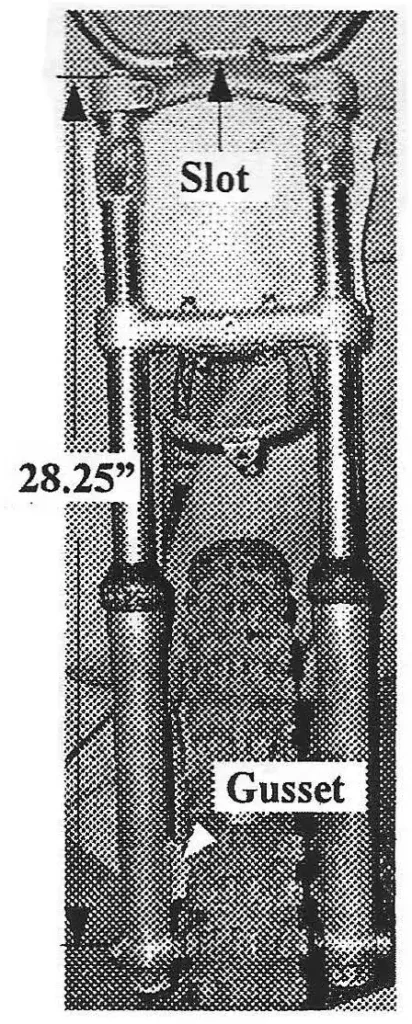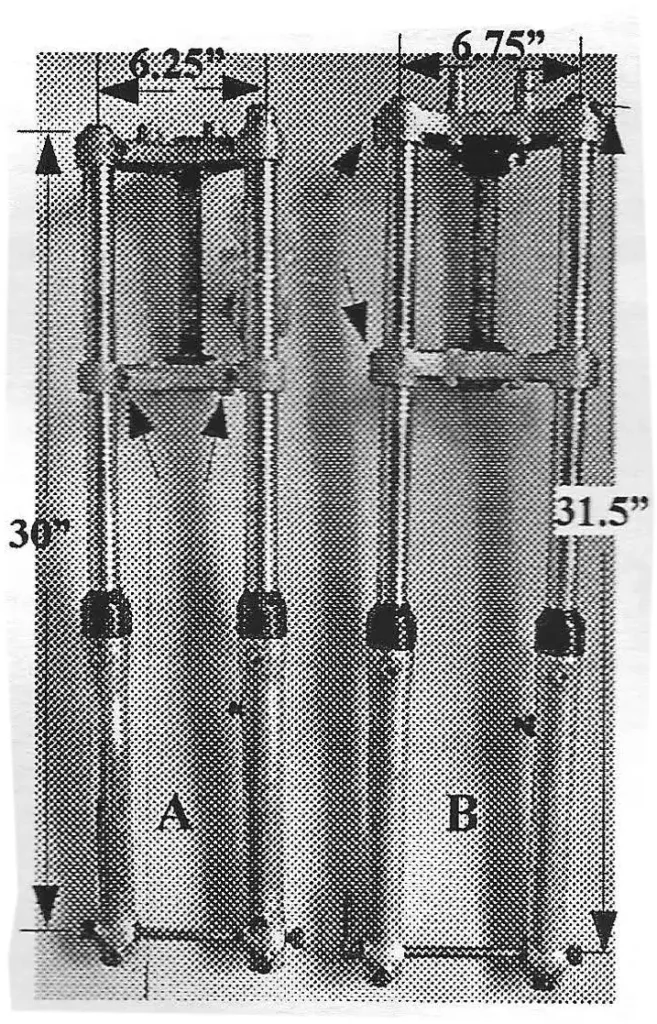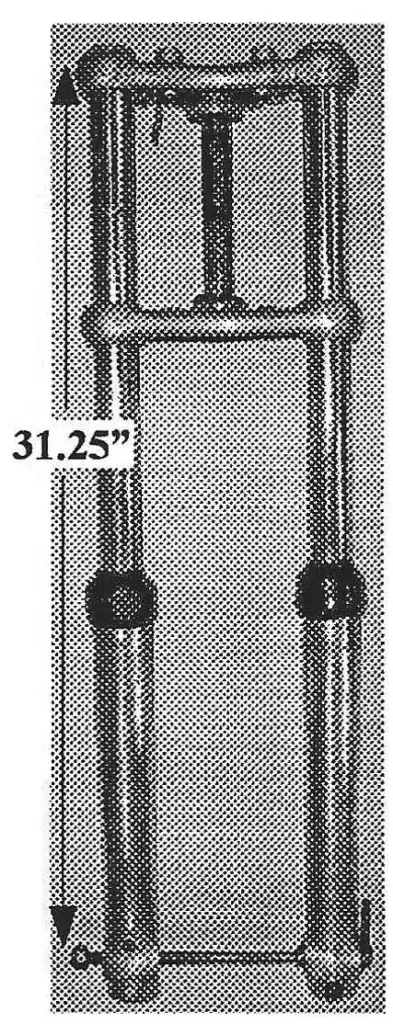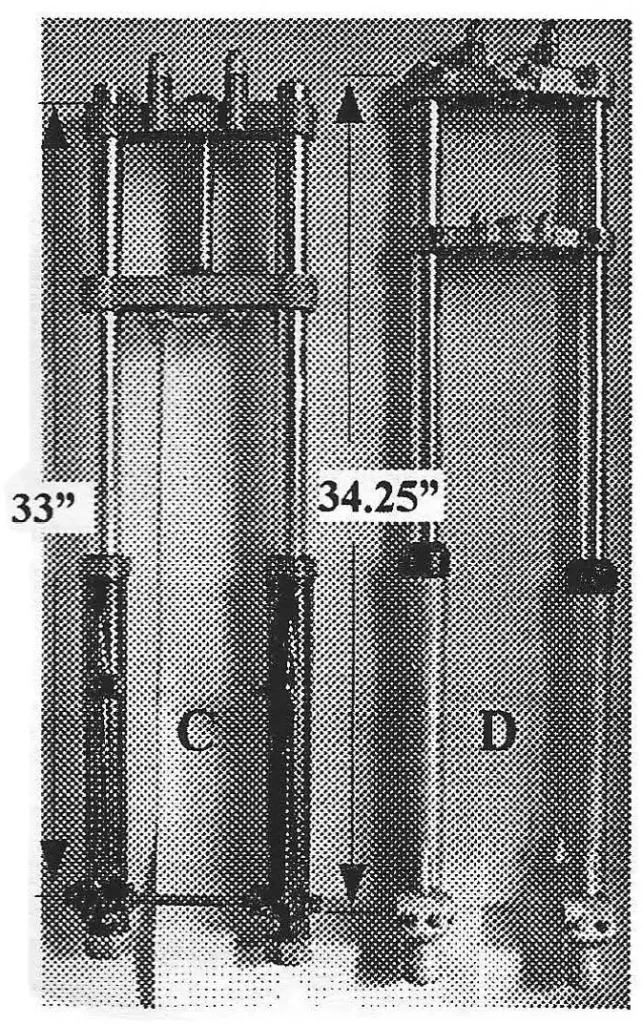Front Forks
What's The Difference?
by Alan Buehner
Originally printed in the 2004 issue #22 of Still….Keeping Track

The Penton/ KTM motorcycles were equipped with the best front forks available at the time. As time went on, technology changed and improvements were made primarily in the length of fork travel. As these changes were made, they were included on the latest model bikes being sold at the time.
As a result of the changes made over the 10 year life of the Penton motorcycles, there are a variety of different styles and a couple of different brands that were used. Unless you have a garage full of Penton bikes, you , would have no idea of what to look for. This article is being written for our members who only have one or two different if models of bikes to help them identify a Marzocchi from a Cerianni and a 32mm from a 35mm.
From 1968 thru 1971 the steel tank Penton motorcycles came equipped with 35mm Ceriani forks. These are easily identified by 3 visible features. The first is the rectangular shaped gusset sticking out on the side of the right fork leg. This gusset fits into the slot of the backing plate of the front brake. The second feature is found on the top fork plate. It has a rounded slot formed in it, that the bottom part of the handlebars fit in. The third feature is the top of the fork tubes, 35mm Cerianni which is squared off (there is no taper). Another feature is the top of the fork legs. The fork boots slide down over the leg and are held in place with a clamp.

The 1972-73 Pentons were equipped with 32mm Cerianni forks. There were 2 styles, the narrow version (A), and the regular version (B).
The narrow version is identified by the single alien head bolts on the fork plates that pinch each fork leg. These bolts are visible on the front side of the fork plates.
The regular version is identified by the double allen head screws on the fork plates. These are visible on the sides of the fork plates.
The 32mm forks are both easily identified by the drilled and tapped round gussets on the front and back side of each fork leg to which a fork brace can be bolted to.

The 35mm Cerianni forks were installed on the 1973 Penton Hare Scramblers. In 1974 they came as standard equipment on all of the Penton motorcycles.
This newer version of the 35mm Cerianni is easily identified by the rounded, tapered sides of the fork plates that circle the fork tubes.
The top of the fork tubes are tapered. This matches the taper on the top fork plates. There are no pinch bolts used on the top fork plate to secure the fork tubes. The tubes are locked in place with the fork tube nuts which are in the shape of an oversize hex head.
The lower fork plate has one allen head bolt to pinch each fork leg. These two bolts are located on the back side of the fork plate.
The top part of each fork leg has a groove in it into which the fork boot snaps, eliminating the need for clamps.
In 1976 the leading axle forks were introduced on the MC 5 model Penton motorcycles. These were the 35mm Cerianni brand forks which were switched over to the Marzocchi brand forks by ,1977 at which time they were installed on all the bikes sold.
Cerianni leading axle forks are easily identified by the large oversized hex head nuts on the bottom of the fork legs. Another identifying mark is the fork tube nut which is shaped into a hex nut for removal with a wrench.
The Marzocchi fork legs bottoms are not threaded and do not have a hex nut. The bottom of each fork leg is not round all the way around and each one has a flat spot on the inside and outside part at the bottom, below the axle.
Another identifying mark is the fork tube caps which have an alien head slot in the center. An 8mm allen wrench is needed to remove these.

D - 35mm Marzocchi fork

have large hex head cap nuts.
